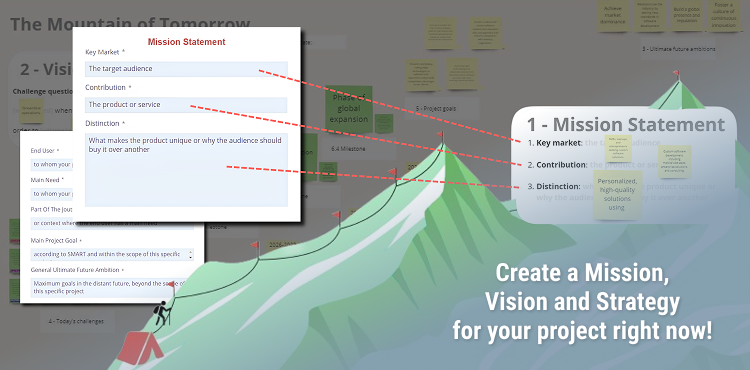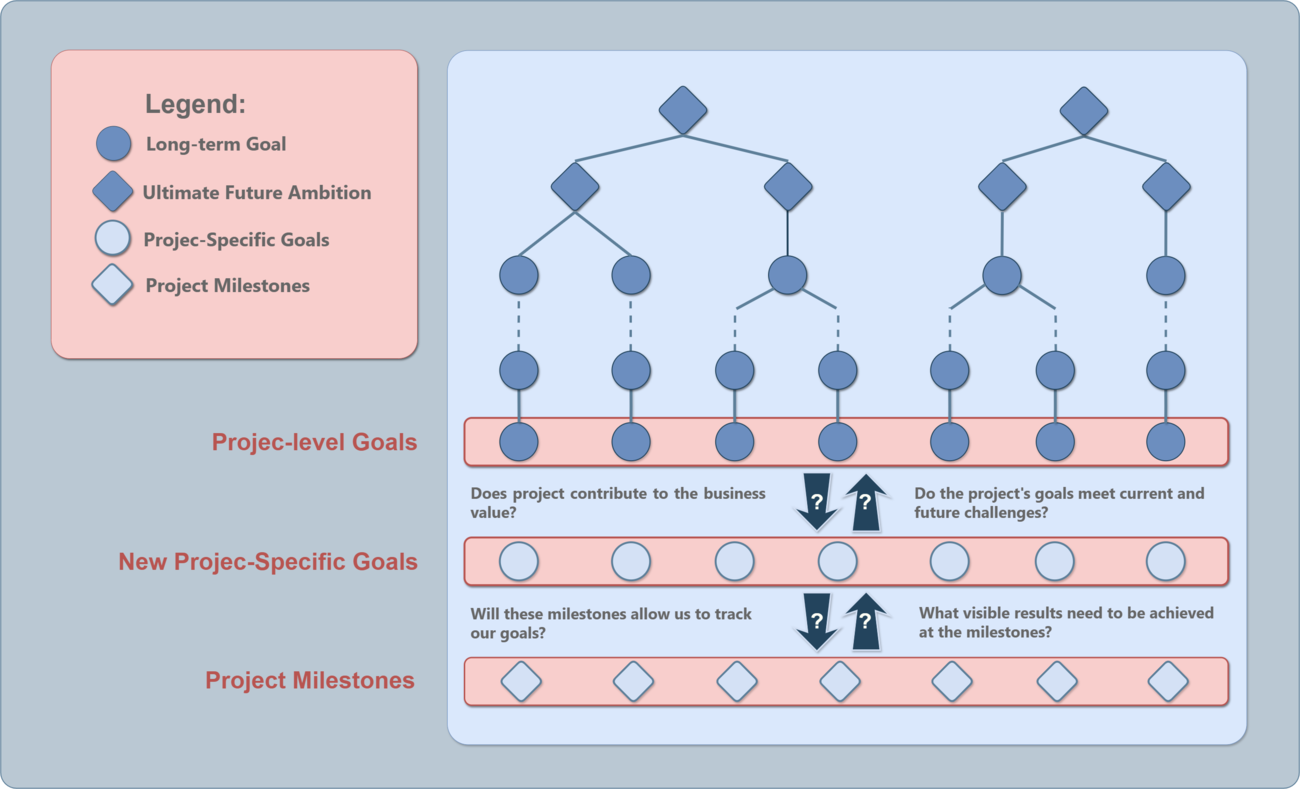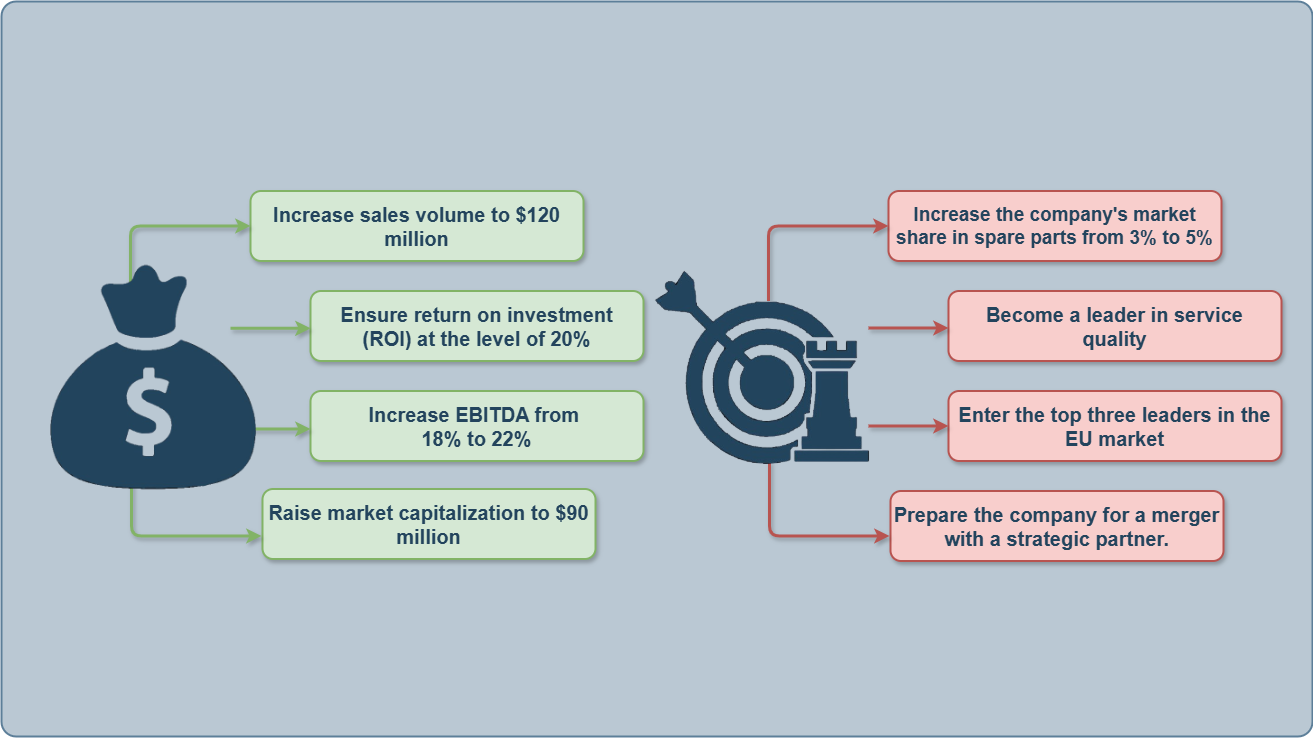Topic Definitions #
Gate 1: Create a Vision?
the first phase of the project, often called the 'Idea' phase. It serves as an exciting starting point. To build a strong project model, the initiator, customer, or project manager must express a bold and ambitious vision for the future. This vision acts as a powerful foundation, inspiring the project's direction and potential.
Project Phase Gates
the continuation of the project is typically decided by a manager, steering committee, or governance board. This decision is thoughtfully made based on current forecasts and available information, which includes the risk analysis, and the availability of essential resources, such as funding and skilled personnel. In this way, the process ensures a well-informed path forward, aligned with project goals.
Phase-Gate Process
this is a highly effective project management technique in which an initiative or project—such as new product development, software creation, process improvement, or business transformation —is thoughtfully divided into distinct stages or phases. Each phase is separated by decision points, known as gates, so that progress can be carefully reviewed and aligned with the overall project goals.
Strategic Objectives
Tactical Plans

Operational Decisions
Alignment
Performance Indicators

Risk Identification

Socio-Cultural Factors
Demographics and Psychographics
Crafting a Compelling Project Vision #
Every successful project starts with an inspiring idea that directs all further development. That’s why defining a clear project vision is crucial. The vision not only initiates the project but also actively guides strategic decisions and daily team actions. Without a well-defined vision, teams may lose focus, causing even the most promising initiatives to drag on. However, with a strong vision, teams can stay on track and achieve their goals more efficiently.
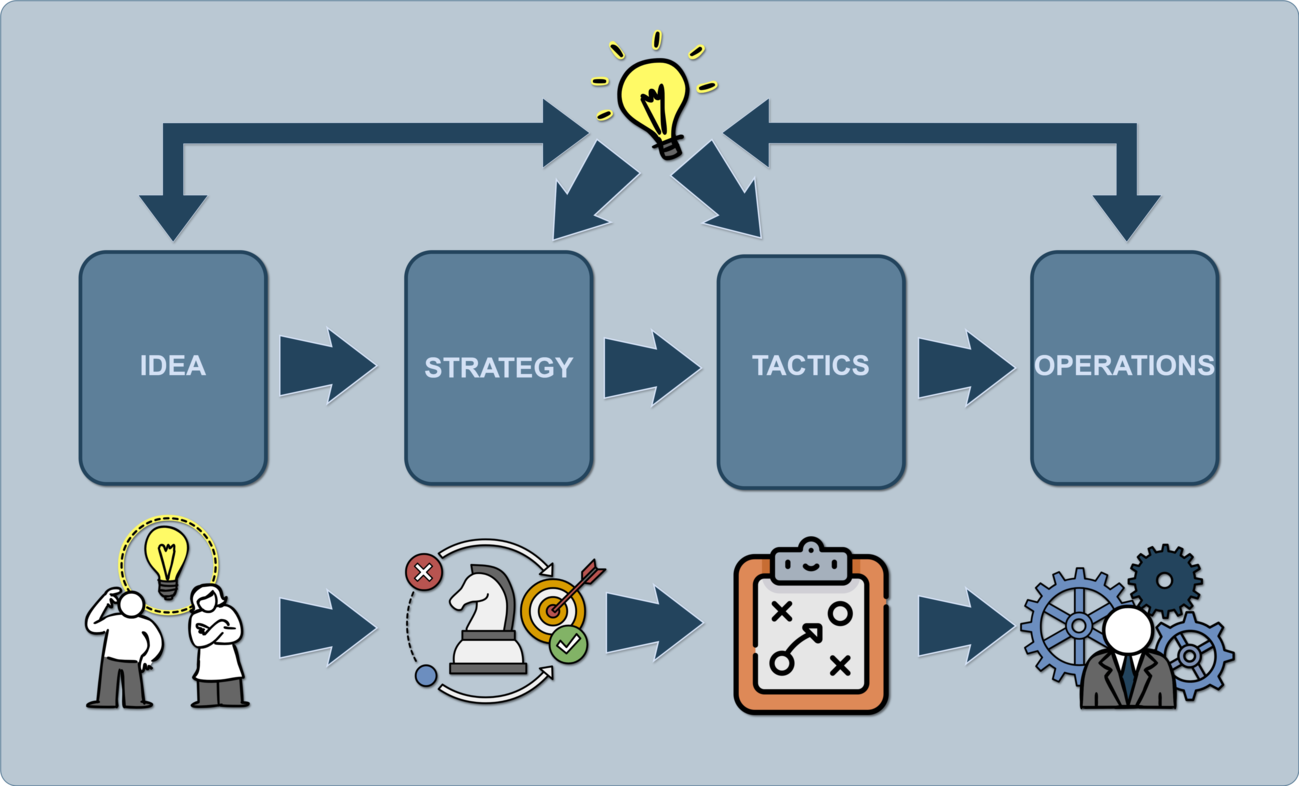
We will explore how an idea transforms into the strategic foundation of a project and why organizations must establish a unified strategic management system. By analyzing different planning horizons—from long-term strategies to tactical operations—you will learn to effectively align business objectives with project tasks and strategies.
We will present various approaches and strategic management methods, using visual examples and diagrams to illustrate how an organization’s abstract ambitions connect with specific project goals and phases. Moving from theoretical definitions to practical tools like the “Mountain of Tomorrow” methodology, you will clearly understand how to develop and structure an initial project vision to ensure its successful implementation at every stage.
Horizons of Strategy and Planning #
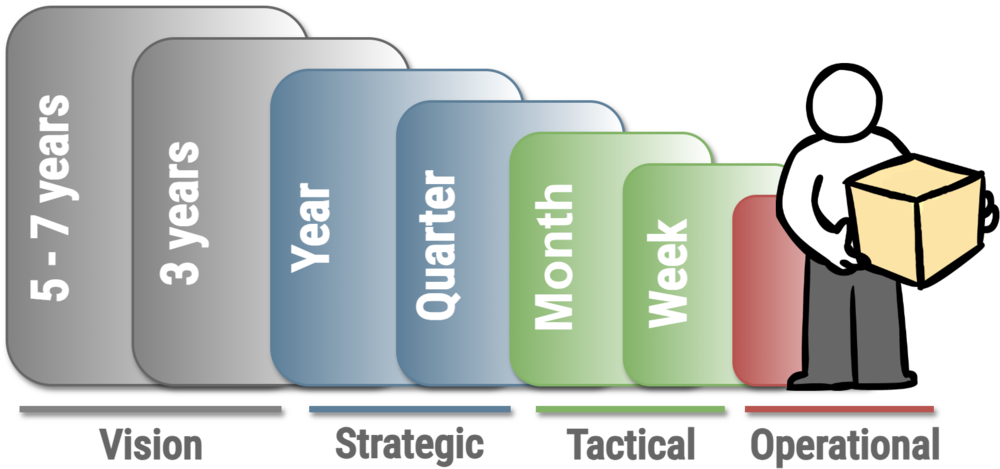
Strategic planning happens across different time horizons. Long-term visions span 5–7 years, while strategic objectives focus on annual or quarterly goals. Tactical plans cover monthly and weekly targets, whereas operational decisions ensure daily execution. Understanding these levels helps align project goals with broader business strategies.
To Create a Vision, it is Necessary to Create a Strategic Management System for an Organization or Business #
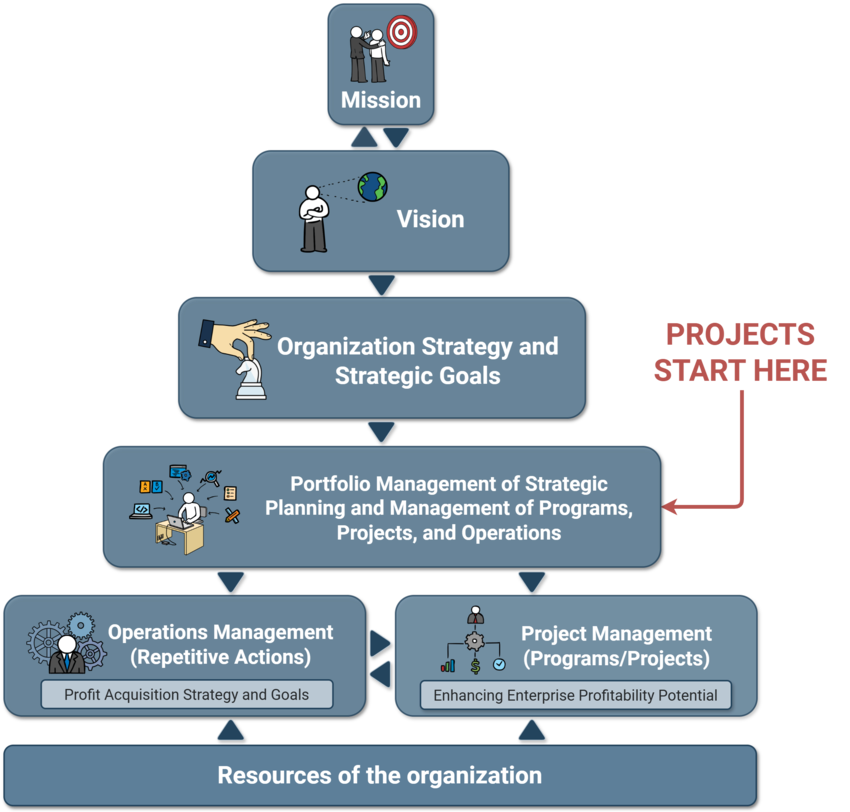
For an organization or business to create a strong vision, it must develop a strategic management system. The process begins with defining a mission—the core reason for its existence. Next, it establishes a vision, outlining its long-term aspirations. These elements guide the organization’s strategy, ensuring all projects align with strategic goals.
Projects originate within this structured framework. By integrating them into a broader strategy, businesses ensure that every initiative contributes to long-term success.
Strategic Modalities #
Mission
Explains why the project / business exists. It provides a clear direction for decision-making and reflects current realities. Unlike short-term strategies, a mission follows a long-term visionary approach without strict time limitations, making it valuable for both internal and external communication.
Vision
Fixes an idea of the future of the project / business. It serves as a roadmap for shaping strategy and responding to evolving circumstances. Designed with specific timeframes, it primarily supports internal objectives. However, strong vision statements also resonate effectively with external audiences.
Strategy
A strategy turns vision into reality. It consists of a carefully structured plan that exceeds costs while delivering maximum value. Strategies require continuous refinement, customer insights, and industry changes. Unlike a vision, which provides direction, a strategy focuses on execution.

Business Goals and Strategies
- Business goals and strategies define an organization's overall direction, forming the foundation for growth.
- Business goals represent the organization's ultimate ambitions.
Strategies serve as structured pathways that guide the organization toward achieving these goals.
Each project contributes to this broader framework by aligning with organizational objectives and strategies.

Project-level Goals (Goal Catalog)
- The middle level includes then catalog of project-level goals. It outlines the specific objectives to be achieved within individual projects. These project objectives are tailored to each project in a way that effectively contributes to the achievement of business goals.
- Project goals are derived from broader organizational objectives and strategies. Each project is created with an understanding of how it should contribute to the overall goals of the organization.
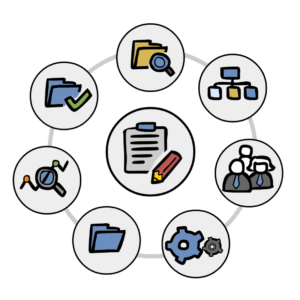
New Project-specific Goals
- At the bottom level , there are new goals specific to each project. These goals are positively focused on achieving concrete results and completing tasks within a specific project. Their purpose is to actively support the achievement of project-level goals, which, in turn, help drive the organization’s goals and strategies.These goals also foster innovation and continuous improvement, ensuring that each project delivers measurable value to the organization.

Project Milestones
- Project milestones are essential checkpoints and achievements that help track positive progress and ensure alignment with the project’s broader goals. Milestones serve not just as tasks but, rather, as critical events and accomplishments that signal a project’s advancement. They are carefully derived from specific goals and effectively measure each step of the project’s progress.
How Project Milestones are Formed #
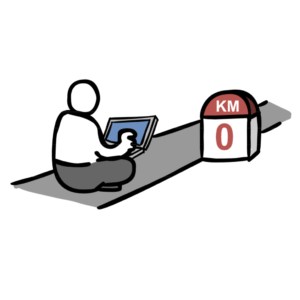
1.From Project-specific Goals:
- Once the project-specific goals are clearly established, these goals are thoughtfully broken down into actionable tasks and phases. Each task is then mapped to specific milestones, which mark important points where key deliverables and positive results can be achieved. This process ensures that the project moves forward in an organized and measurable way.

2.Tracking Progress:
- Milestones provide measurable indicators of progress. They give project teams and stakeholders a clear view of whether the project is advancing as planned. If a milestone is missed, adjustments can be made promptly to keep the project on track.
Regular milestone reviews help identify potential risk early, allowing teams to proactively address challenges before they escalate.
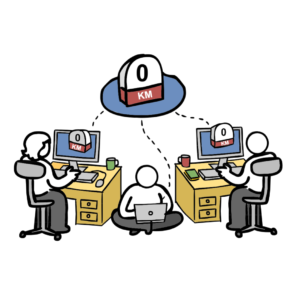
3.Alignment with Organizational Objectives:
- Each milestone should be thoughtfully designed so that its successful achievement not only supports the completion of project-specific goals but also actively contributes to the broader organizational objectives and strategies . In this way, milestones serve as valuable markers of incremental progress toward the organization’s larger strategic goals, fostering alignment and momentum.

4.Examples of key milestones include:
- Completion of a critical phase (e.g., design phase, development phase).
- Approval of key deliverables (e.g., a prototype, a feasibility study).
- Achieving specific performance indicators (e.g., reaching a certain number of users or sales).
- Regulatory approvals or completion of testing stages.
Today's Challenges #
Today’s Challenges are obstacles during project launch, planning, and scope definition, including market conditions, technical tasks, and stakeholder support. Addressing them is key to project success.
Market Challenge
involves competition, shortages of supply, changes in consumer behaviour, demographics and psychographics, socio-cultural factors.
Project Challenge
involves the solution to be designed, developed and delivered to solve a problem or address an opportunity within a given project.
Adopt Challenge
It involves the importance of the human aspect of change, considers their need for support, and ensures a positive impact on all participants
The Mountain of Tomorrow - Brainstorming of the Mission, Vision and Strategy of the Project #
The ‘Mountain of Tomorrow’ framework helps teams develop a clear mission, vision, and strategy. By visualizing key objectives and challenges, teams can create actionable plans that drive long-term success and help them Create a Vision rooted in purpose and measurable impact.
Conclusion #
A well-crafted project vision is far more than a motivational statement—it is the strategic compass that guides every phase of development, from concept to execution. By anchoring the project in a structured strategic management system that connects mission, vision, and strategy, organizations ensure that their initiatives are purpose-driven and aligned with long-term goals.
Understanding the horizons of planning — from long-term ambitions to daily operations—enables teams to synchronize business and project-level goals. Through frameworks like the “Mountain of Tomorrow,” teams can Create a Vision that transforms abstract aspirations into actionable milestones that are both measurable and strategically relevant. Each milestone then becomes a marker of progress, ensuring consistent alignment with broader organizational objectives.
In an environment shaped by market pressures, project complexity, and the need for human-centered change, a strong vision provides stability, focus, and direction. It empowers teams to Create a Vision that responds effectively to today’s challenges, fosters innovation, and ultimately delivers outcomes that drive sustainable success.
